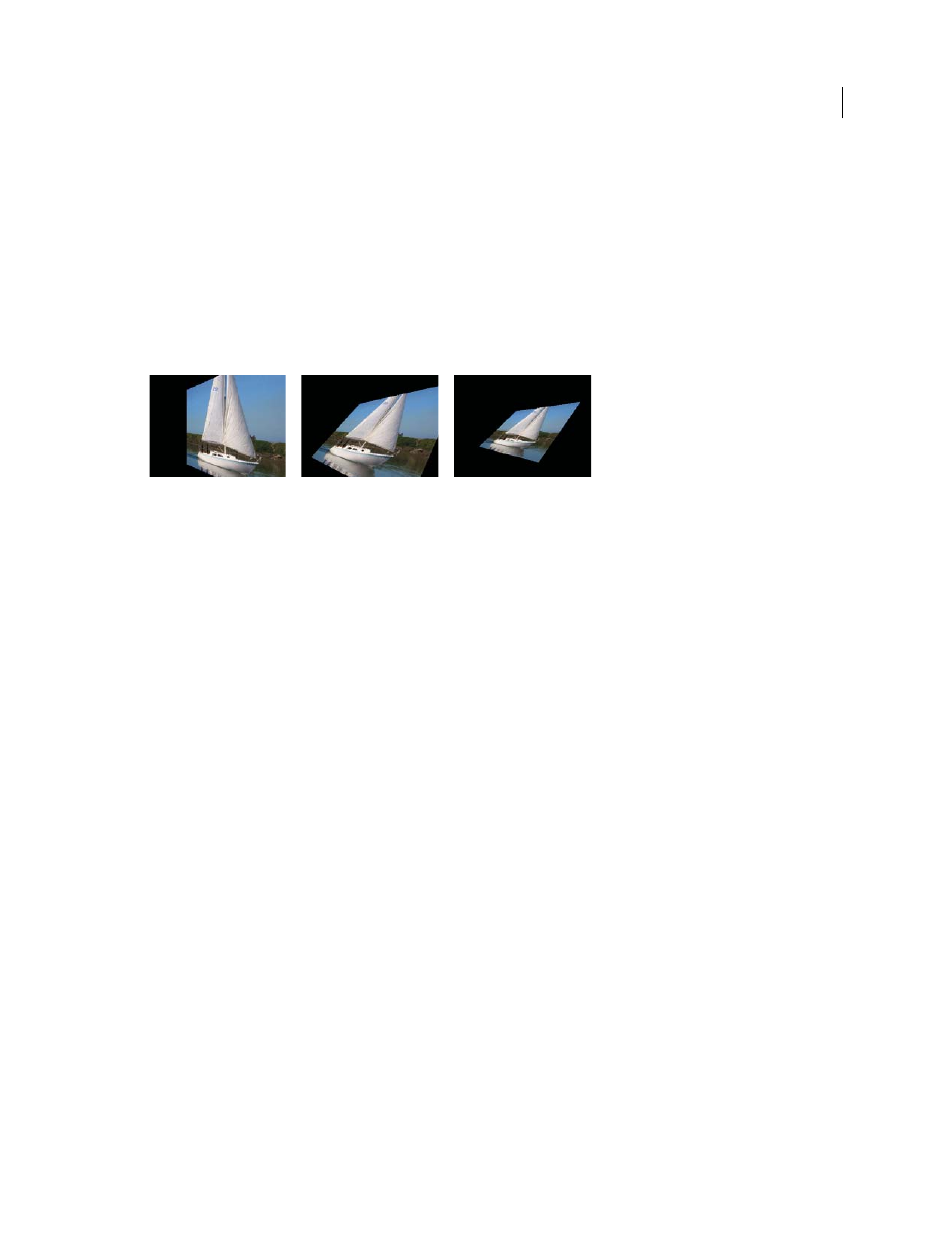Perspective effects, Basic 3d effect, Bevel alpha effect – Adobe Premiere Pro CS4 User Manual
Page 389: Bevel edges effect

383
USING ADOBE PREMIERE PRO CS4
Effects and transitions
Last updated 11/6/2011
Perspective effects
Basic 3D effect
The Basic 3D effect manipulates a clip in 3D space. You can rotate an image around horizontal and vertical axes and
move it toward or away from you. With Basic 3D, you can also create a specular highlight to give the appearance of
light reflecting off a rotated surface. The light source for the specular highlight is always above, behind, and to the left
of the viewer. Because the light comes from above, the image must be tilted backward to see this reflection. Specular
highlights can enhance the realism of the 3D appearance. For a video tutorial about using the Basic 3D effect and the
Lighting Effects, see
by Jeff Schell on his Digital Media Net blog.
Basic 3D effect: Swivel (left), Swivel and Tilt (center), and Swivel, Tilt, and Distance (right)
Swivel
Controls horizontal rotation (rotation around a vertical axis). You can rotate past 90° to see the back side of
the image, which is the mirror image of the front.
Tilt
Controls vertical rotation (rotation around a horizontal axis).
Distance To Image
Specifies the image’s distance from the viewer. As the distance gets larger, the image recedes.
Specular Highlight
Adds a glint of light that reflects off the surface of the rotated image, as though an overhead light
were shining on the surface. If Draw Preview Wireframe is selected, the specular highlight is indicated by a red plus
sign (+) if it isn’t visible on the clip (the center of the highlight doesn’t intersect the clip) and a green plus sign (+) if
the highlight is visible. You must render a preview before the Specular Highlight effect becomes visible in the Program
Monitor.
Preview
Draws a wireframe outline of the 3D image. The wireframe outline renders quickly. To see your final results,
deselect Draw Preview Wireframe when you finish manipulating the wireframe image.
More Help topics
Bevel Alpha effect
The Bevel Alpha effect adds a beveled edge and lights to the alpha boundaries of an image, often giving 2D elements a
3D appearance. If the clip has no alpha channel or if the clip is completely opaque, then the effect is applied to the edges
of the clip. The edge created by this effect is somewhat softer than that created by the Bevel Edges effect. This effect
works well with text containing an alpha channel.
Bevel Edges effect
The Bevel Edges effect gives a chiseled and lighted 3D appearance to the edges of an image. Edge locations are
determined by the alpha channel of the source image. Unlike Bevel Alpha, the edges created in this effect are always
rectangular, so images with non rectangular alpha channels don’t produce the proper appearance. All edges have the
same thickness.
